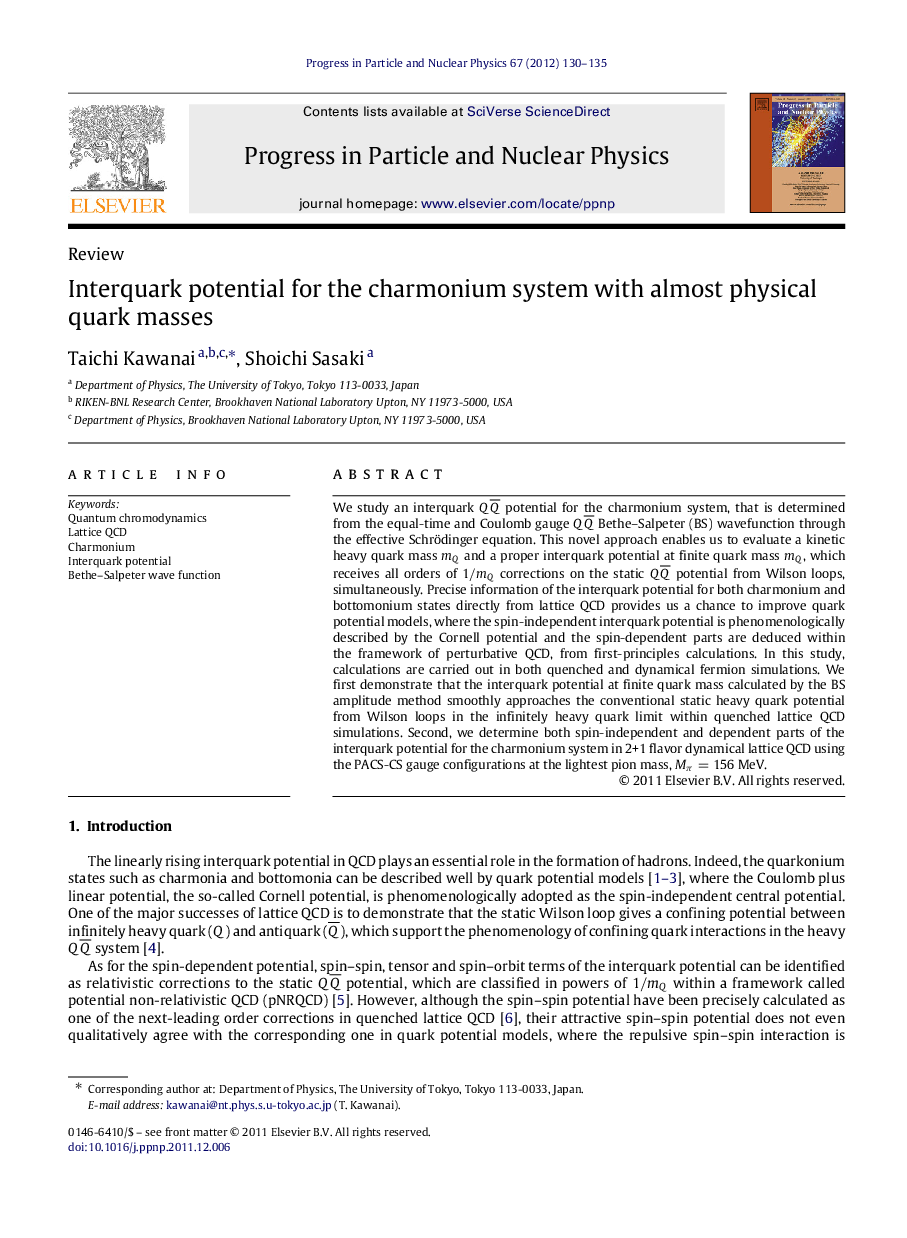| Article ID | Journal | Published Year | Pages | File Type |
|---|---|---|---|---|
| 10726246 | Progress in Particle and Nuclear Physics | 2012 | 6 Pages |
Abstract
We study an interquark QQ¯ potential for the charmonium system, that is determined from the equal-time and Coulomb gauge QQ¯ Bethe-Salpeter (BS) wavefunction through the effective Schrödinger equation. This novel approach enables us to evaluate a kinetic heavy quark mass mQ and a proper interquark potential at finite quark mass mQ, which receives all orders of 1/mQ corrections on the static QQ¯ potential from Wilson loops, simultaneously. Precise information of the interquark potential for both charmonium and bottomonium states directly from lattice QCD provides us a chance to improve quark potential models, where the spin-independent interquark potential is phenomenologically described by the Cornell potential and the spin-dependent parts are deduced within the framework of perturbative QCD, from first-principles calculations. In this study, calculations are carried out in both quenched and dynamical fermion simulations. We first demonstrate that the interquark potential at finite quark mass calculated by the BS amplitude method smoothly approaches the conventional static heavy quark potential from Wilson loops in the infinitely heavy quark limit within quenched lattice QCD simulations. Second, we determine both spin-independent and dependent parts of the interquark potential for the charmonium system in 2+1 flavor dynamical lattice QCD using the PACS-CS gauge configurations at the lightest pion mass, MÏ=156 MeV.
Related Topics
Physical Sciences and Engineering
Physics and Astronomy
Nuclear and High Energy Physics
Authors
Taichi Kawanai, Shoichi Sasaki,
